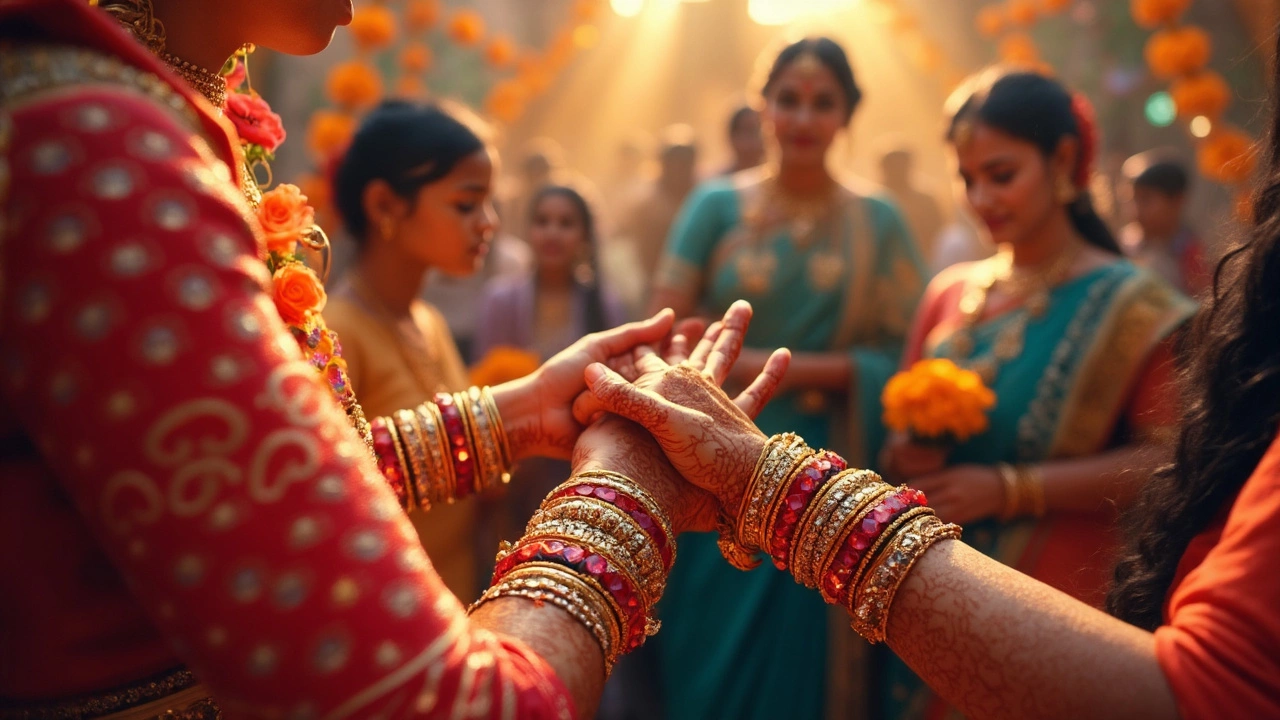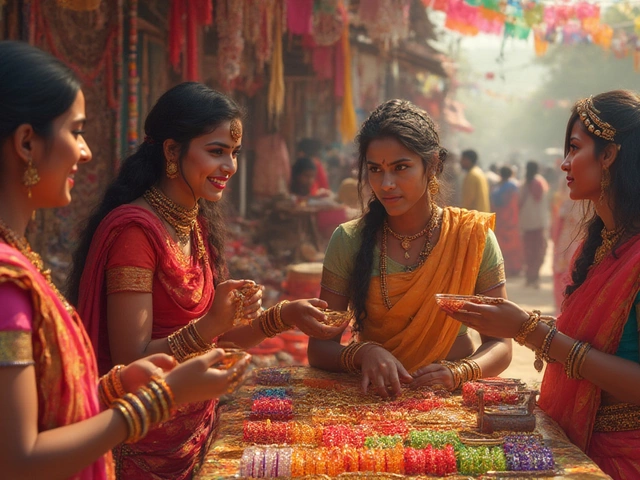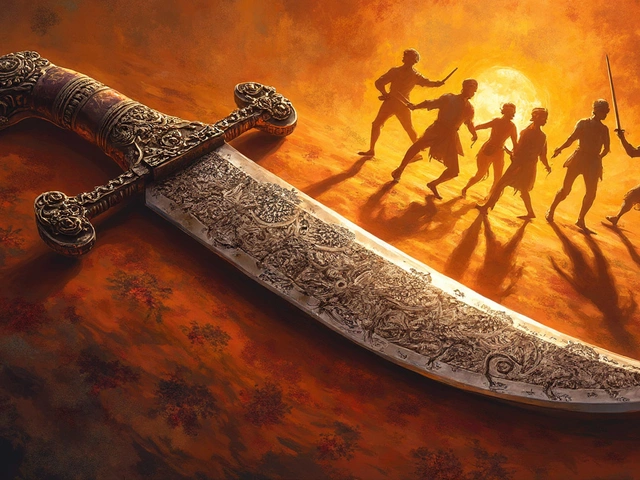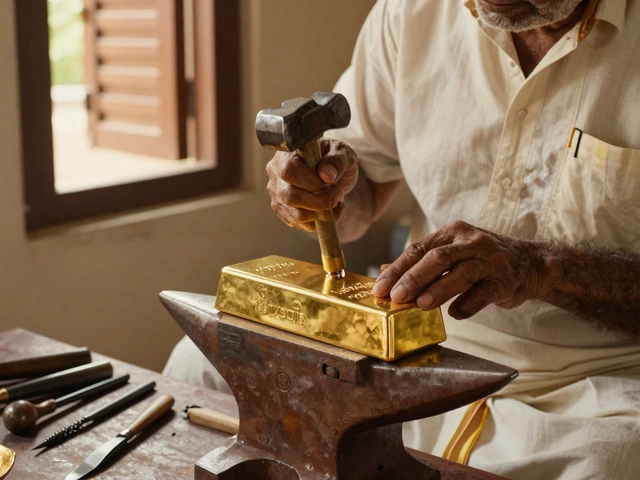Bangles in India aren’t just pieces of jewelry; they’re a treasure trove of tales that span centuries. These circular beauties carry stories of ancient traditions, social meanings, and changing fashions. So, why do folks in India cherish them so much? Well, they go beyond mere adornment. They are steeped in cultural beliefs, representing everything from marital status to good fortune.
Ever noticed how a bride's arm glistens with a shower of bangles? That’s no accident. In many Indian communities, bangles are a vital part of wedding attire, closely linked to the bride's new journey. They aren't just for show—they symbolize happiness, prosperity, and the well-being of her future family.
- Historical Roots of Bangles
- Symbolism and Meanings
- Bangles in Indian Weddings
- Regional Variations
- Modern Trends and Tips
Historical Roots of Bangles
The journey of bangles goes way back, like way back to the Indus Valley Civilization around 2600 BC. Archaeological digs have found bangles crafted from materials like shell, copper, and even glass in these ancient sites. This shows how intrinsic they've been to the cultural fabric since ancient times.
What's truly fascinating is how these jewelry pieces hold a mirror to India's rich history. Throughout periods of dynastic reigns—be it the Mauryas, Guptas, Cholas, or Mughals—bangle styles evolved, influenced by the era's social and economic changes. Different materials came into play based on availability and social status.
“Bangles reflect the diversity and cultural richness of India across eras,” says eminent historian Dr. M. V. Dutt.
It's also worth noting how bangles have been symbols of feminine elegance and prosperity since forever. They were a part of royal treasuries and common household traditions alike. As times changed, so did the styles—from ornate gold bangles in ancient times to modest clay or glass ones in rural setups.
| Era | Material | Significance |
|---|---|---|
| Indus Valley | Shell, Copper, Terracotta | Everyday wear, Rituals |
| Mauryan | Gold, Silver | Adornment, Status |
| Mughal | Gold, Precious Stones | Royalty, Artistry |
Through the twists and turns of history, these cultural tokens adapted, yet their core value remained significant. Today, traditional bangles not only resonate with history but also hold contemporary value, making them a beautiful blend of the past and present.
Symbolism and Meanings
Bangles in India are brimming with symbolism and meanings that go way beyond fashion. First off, they’re a must-have in a married woman’s wardrobe. In many traditions, wearing these colorful bands marks a woman's marital status and signifies good fortune and well-being for her husband and family.
Different colors and materials can bring on different vibes. For instance, red bangles are pretty popular as they represent energy and prosperity. Green ones? They’re all about fertility and luck. In some places, glass bangles have their charm, believed to bring positivity and warding off bad luck.
"Bangles express much more than beauty; they reflect cultural identities and convey profound meanings." – Dr. Ravi Prakash, Cultural Historian
In addition to their color, the sound of bangles is significant, too. The delicate clinking isn't merely musical; it’s considered auspicious, believed to sanctify the space around it. Many even say the sound keeps negative energy at bay.
Let's not forget their role in significant life events. During weddings, the 'Chooda' ceremony involves the bride wearing a set of red and white bangles, symbolizing love and new beginnings. Similarly, in some regions, a mother-to-be's wrists are adorned with bangles during her baby shower, meant to protect the baby and mom from any kind of mishap.
So, when you think about bangles, remember—they’re much more than just simple accessories. They’re threads connecting generations with culture, heritage, and a touch of belief.
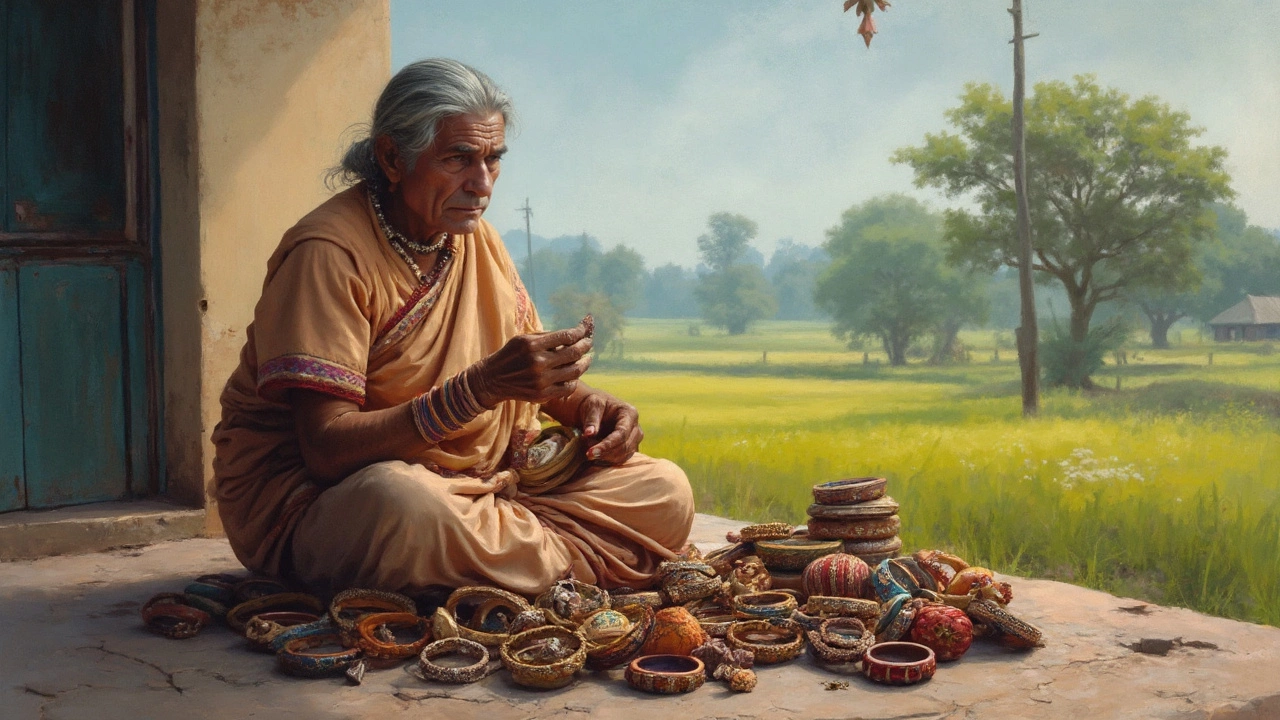
Bangles in Indian Weddings
When it comes to Indian weddings, bangles play a starring role in the celebrations and rituals. Their importance isn't just about making a fashion statement; they're packed with rich symbolism and meaning. Every bangle stacked up on the bride's arm has a story to tell, and it's one that resonates deeply within her family and society.
One of the most recognized bangle traditions involves the 'Chooda' in Punjabi weddings. This is a set of red and white bangles that a bride wears, signifying her new status as a married woman. Typically, these bangles are worn for an extended period after the wedding, often 40 days or even up to a year, symbolizing her newlywed status.
In South India, glass bangles in green and yellow are more common, representing fertility and prosperity. These are worn with gold bangles as part of the traditional bridal attire. Meanwhile, in Gujarat and Rajasthan, ivory bangles known as 'Kada' are a significant part of the ensemble.
- Red: Symbolizes passion and marital bliss.
- Green: Denotes fertility and prosperity.
- Golden/Metallic: Signify wealth and power.
Of course, beyond all the cultural meanings, weddings are about joy and family. Bangles clinking softly as the bride moves through her day remind everyone of the happiness the occasion brings. Each bangle is like a little ring of memories, capturing the spirit of celebration and togetherness.
Regional Variations
India’s vast cultural landscape means that almost every region has its own unique take on bangles. These variations are like little windowpanes into the local customs and beliefs. So, what's the lowdown on where bangles stand region by region?
Let’s start in the north. In Punjab, the iconic red and white chooda bangles are a must for brides, symbolizing prosperity and happiness. These aren’t just any bangles—they come with a set of rules, like being worn for a specific period following the wedding.
Down south, in Tamil Nadu and Kerala, gold is the name of the game. Unlike the glass or lac bangles found elsewhere, these are heavy, opulent, and often gifted by family members. They’re believed to bring blessings and good luck to women.
Rajasthan and Gujarat’s maestros craft lac bangles, known for their vivid colors and intricate detailing. Perfect for festivals and celebrations, these bangles are all about vibrancy and life. And here, bangles are paired with traditional outfits like lehengas and saris to complete a woman’s festive look.
On the eastern front, West Bengal has a unique tradition of pairing conch shell bangles with iron ones, called shakha pola. These bangles signify marital bliss and are gifted by the mother-in-law during the wedding ceremony.
- Punjab: Red and white chooda
- Tamil Nadu/Kerala: Gold bangles
- Rajasthan/Gujarat: Lac bangles
- West Bengal: Conch shell and iron (shakha pola)
Each region’s preference is rooted deeply in cultural beliefs, so when you see a woman wearing a specific type of bangle, you’re not just seeing a piece of jewelry. You’re seeing a glimpse into a tradition that’s as rich as it is fascinating.
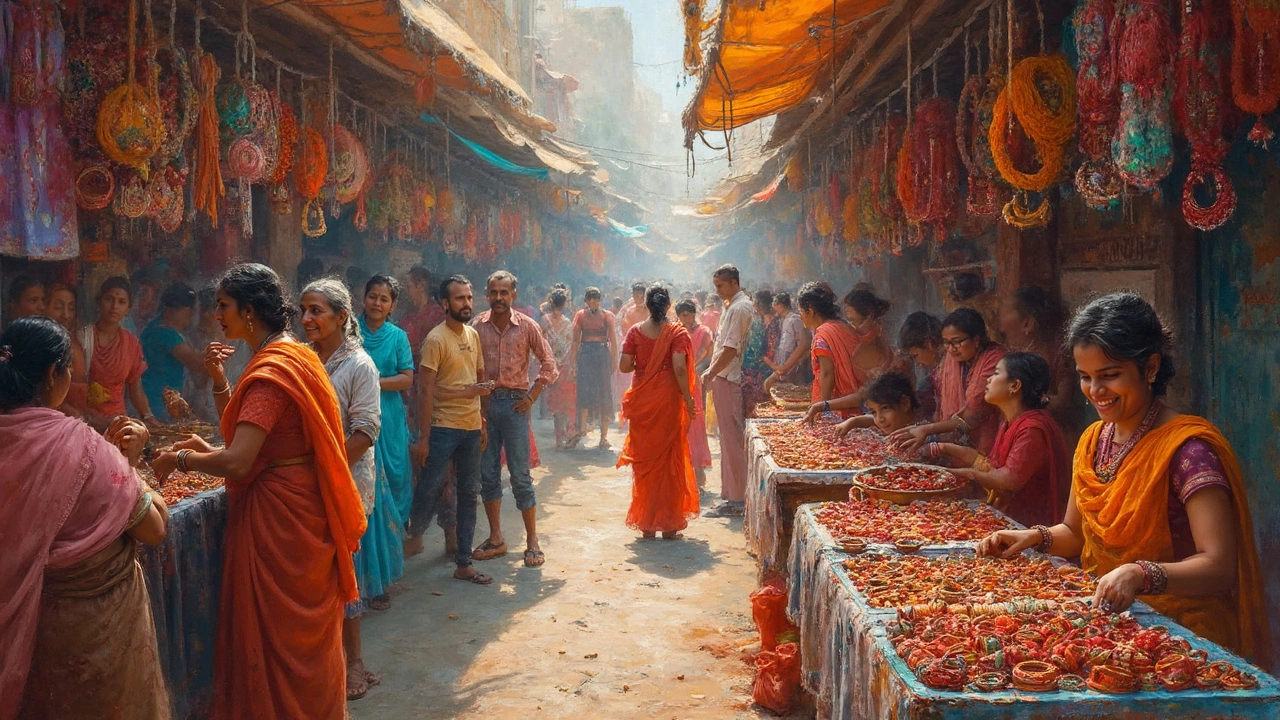
Modern Trends and Tips
The charm of bangles isn’t waning anytime soon! These timeless pieces are catching up with today’s fashion game, blending tradition with trendy vibes. Sure, they hold cultural significance, but now they're also a fashion statement.
Nowadays, bangles are crafted from an array of materials—traditional glass to sleek metal or vibrant plastic, you name it. Metallic bangles are quite the trend, offering a chic look that's easy to match with any outfit. Plus, the fusion of ethnic designs with modern craftsmanship is a huge hit among the younger crowd.
Wondering how to mix and match your bangles? Here are a few fun tips:
- Combine different materials for a textured look. Think metal with glass or wood with acrylic.
- Play with colors. Coordinate contrasting hues to give your ensemble a pop.
- Layer them up. Mismatched bangles of different sizes can add a playful vibe.
Not to forget, there’s a growing demand for customized jewelry. Personalized bangles with engravings or charms let you carry a piece of nostalgia or a special memory on your wrist.
Believe it or not, there’s also a practical shift in the bangle world. Some designers are adding technological twists, like smart bangles. These pieces aren’t just for aesthetics; they're integrating tech features like fitness tracking and notifications. Talk about mixing tradition with tech!
